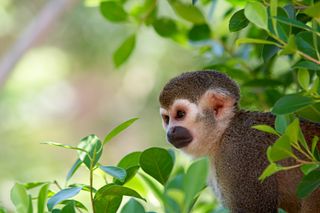Scientists have identified and named over a million animal species, and there are millions more yet to be discovered across Earth’s seven continents. But which continent has the most animal species?
For hundreds of years, scientists have been cataloging and geolocating species across the globe. Prior to the digital age, most of our information about species distribution came from museum collections, said Vítor Piacentini, an ornithologist at the Federal University of Mato Grosso in Brazil. Nowadays, the public also contributes to this effort.
In the past 20 years, there has been a “revolution” in citizen science, Piacentini told Live Science, and “scientists are using their data to fill the gaps.”
Using this information, scientists can map the distribution of species worldwide. In the late 1980s, scientist Norman Myers coined the term “biodiversity hotspot” to refer to places with an exceptionally high number of species for their surface area. Of the now 36 hotspots worldwide, most are in continents that cross the equator, where the climate is warm and humid.
The reason for this has to do not just with animals but also with plants. “Plants are the foundation of species,” Barnabas Daru, an applied ecologist at Stanford University, told Live Science. “If a place has a higher diversity of plants, it makes it easier for other organisms that depend on those plants to become more abundant.”
Related: Which group of animals has the most species?
Although plants can live in all sorts of conditions, most thrive in warm, humid places. The humidity and warmth work together to provide essential moisture: Warm air traps water molecules to create humidity. Warmth is also better for many microorganisms, especially the decomposers, which break down dead material that the plants harvest for nutrients.
On top of all this, insects, which pollinate many flowering plants, are better suited for warmer climates because they can’t regulate their own body temperature. Having more insects in the tropics means more pollination for plants and more food for hungry predators, Daru said.
But Piancentini noted that other factors are also at play. To house a lot of species, a continent must offer not only tropical conditions but also a…
Click Here to Read the Full Original Article at Livescience…

